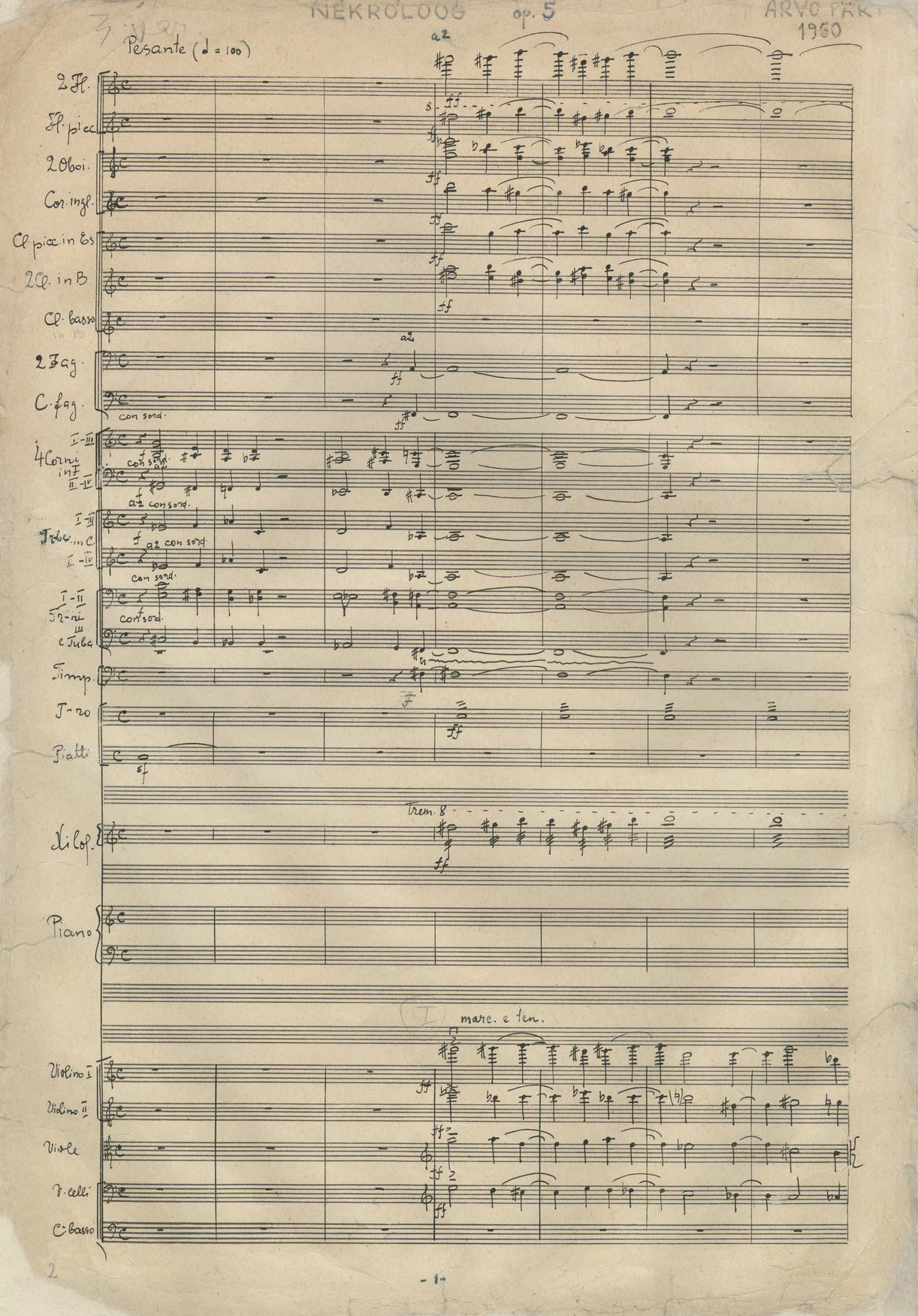Many of Arvo Pärt’s earlier works have proven to be pioneering in Estonian modernist music, including his first orchestral piece Nekrolog, completed in 1960, while Pärt was still a student. It was the first performed dodecaphonic piece in Estonian music.
Nekrolog initially generated controversial opinions in music circles. In the weekly discussion meeting at the Estonian Composers Union, a critical attitude was taken towards the work because “dodecaphonic expression is not suitable for Soviet music”. The chairman of the Union of Soviet Composers, Tikhon Khrennikov, expressed direct condemnation, calling it “avant-garde bourgeois music”. In order to encourage the approval of the composition by the Estonian Composers Union, some of Pärt’s colleagues suggested d…
Many of Arvo Pärt’s earlier works have proven to be pioneering in Estonian modernist music, including his first orchestral piece Nekrolog, completed in 1960, while Pärt was still a student. It was the first performed dodecaphonic piece in Estonian music.
Nekrolog initially generated controversial opinions in music circles. In the weekly discussion meeting at the Estonian Composers Union, a critical attitude was taken towards the work because “dodecaphonic expression is not suitable for Soviet music”. The chairman of the Union of Soviet Composers, Tikhon Khrennikov, expressed direct condemnation, calling it “avant-garde bourgeois music”. In order to encourage the approval of the composition by the Estonian Composers Union, some of Pärt’s colleagues suggested dedicating it to the victims of fascism, which could justify its modernist sound.
According to the composer, Nekrolog is not a monument to the victims of the concentration camp at Kalevi-Liiva, but is composed to the whole world. Arvo Pärt: “It was not for any particular victims of communism or fascism, but for much more significant victims. It was music for the burial of the world. There is no connection with ideology or politics. /…/ And from then on the searches started from scratch. Searches for truth, searches for purity; these were actually searches for God.” (Immo Mihkelson, The Sound and Silence. Arvo Pärt 70, episode 4).
The musical core of Nekrolog is composed of two characters, one of which is an expressive, sharply dissonant and aggressive mass of sound, while the other, containing an oboe solo, is gentle, transparent and painful. In one of her articles, Ofelia Tuisk refers to the second subject as the quiet and expressive chamber episodes leading to an impression of the “conversation between the Earth and the Sky” (Muusikalisi lehekülgi, Eesti Raamat, 1965, p. 163), an image, which later becomes peculiar to Pärt’s tintinnabuli works. The dodecaphonic technique is not rigorous throughout the composition as Pärt uses also the material not based on the 12-tone row. The expressiveness, polyphonic manners, vast contrasts in dynamics and texture predicted Pärt’s symphonic style, especially his Symphony No. 1.
Paradoxically, Nekrolog premiered in Moscow in 1961, performed by the Moscow Radio Symphony Orchestra, conducted by Roman Matsov. In the following years, the work was performed in Leningrad and Geneva. The Estonian premiere took place on 7 October 1966, performed by the Estonian Radio Symphony Orchestra and conducted by Eri Klas.
